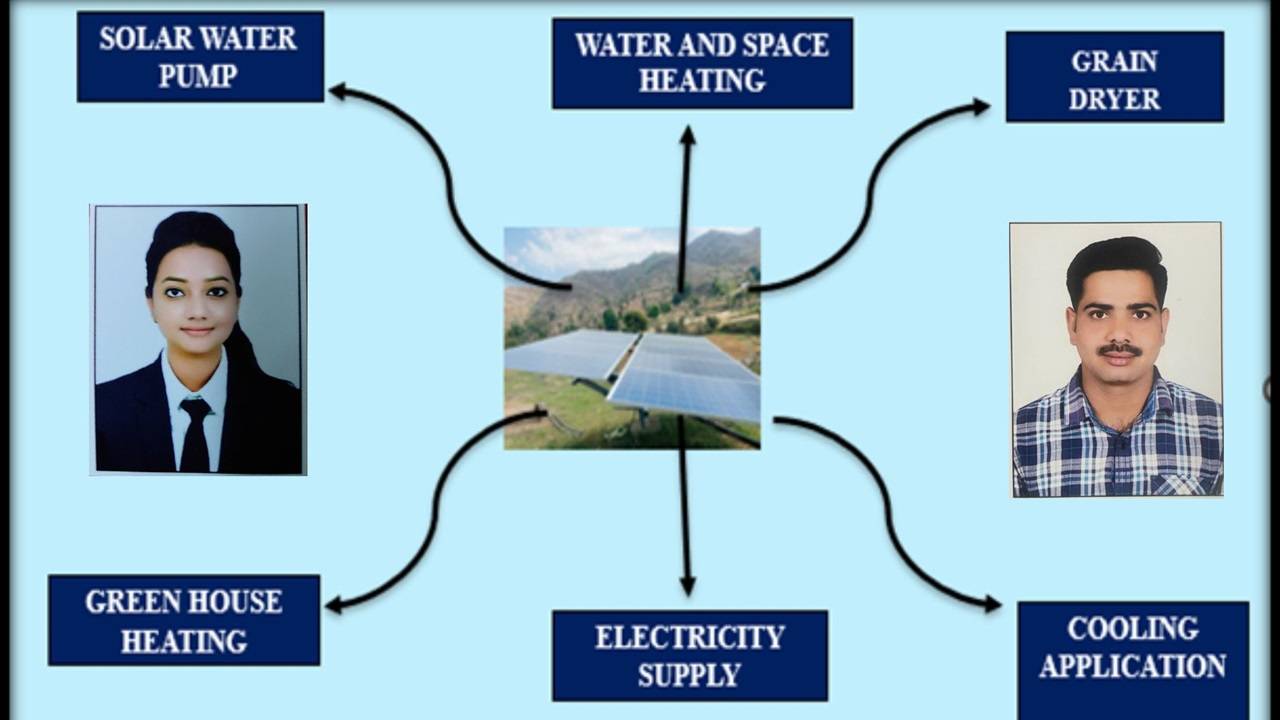
Solar Energy is one of the cheapest energy sources in agriculture and energy sources such as fossil fuels harm the environment and affect agriculture. Therefore, the use of solar energy in agriculture both reduces costs and benefits the environment. Additionally, as resources decrease, dependence on fossil fuels becomes unsustainable.
Solar energy comes from an inexhaustible source and has many uses in agriculture if used sustainably. Agricultural solar energy is also cheaper than conventional electricity. Solar energy is radiant light and heat from the sun and can be harnessed through a variety of technologies, including solar energy, solar thermal energy (such as solar energy, gold), and solar energy conservation.
They are an important source of renewable energy, and their technologies are generally classified as solar or active solar, depending on how they capture and distribute solar energy or switch to solar energy. The use of solar technology includes the use of energy using photovoltaic systems, solar energy and solar hot water. Passive solar energy techniques include orienting buildings towards the sun, choosing materials that have thermal mass or the ability to scatter light, and always creating space for air to circulate.
Solar Energy in Agriculture
- Solar water pumps: Install photovoltaic systems that only operate when the sun is shining and provide water on demand.
- Water and space heating: Well-designed solar energy systems can heat the air before it enters the building.
- Crop and grain drying: There is a solar dryer that can protect agricultural products and dry crops more evenly and quickly. This crop is also more profitable than open dried crops.
- Green house heating: Solar powered greenhouse heating systems provide heat and light. Solar energy is used to collect and store energy in greenhouses. It also has thermal insulation to help keep you warm in cold days and nights.
- Remote supply of electricity: Photovoltaic systems use sunlight to generate electricity. These devices are useful in areas where electricity is not available. They also require less maintenance and are cheaper than burning fossil fuels.
- Cooling application: In rural areas, solar powered air conditioning options offer a clean energy option. It allows farmers to increase yields by reducing damage and keeping costs low.
Impact of Solar Water Pump on Agriculture
- Increase in groundwater consumption: The use of solar water pumps has disrupted the energy-water-food supply chain by increasing groundwater consumption.
- Fall in electricity consumption: Using a solar water pump helps reduce average energy consumption.
- Reduction in average gasoline consumption: Average gasoline consumption decreased after using solar pump
- Improvement in food security: Improvement in consumer food security is reflected in the increase and expansion in the use of centralized facilities i.e., total plant area.
- Increase in income security: Improved income security makes solar pump users more profitable every year.
Government Schemes to Promote Use of Solar Technology in Agriculture
- Government plans to promote use of solar technology in agriculture National Solar Mission is an initiative of the Government of India and state governments to promote solar energy production through Sunlight.
- The project, which was inaugurated by former Prime Minister Manmohan Singh on January 11, 2010, aims to reach 20 GW by 2022. PM-KUSUM Yojana was implemented in 2019 and consists of 3 items. The aim is to ensure energy security for Indian farmers and fulfill India's commitment to increase the percentage of fossil fuel production to 40% by 2030.
- Within the scope of the Rooftop Solar Energy (RTS) program, the Ministry will provide a 40% subsidy for the first 3 kW and a 20% subsidy for between 3 kW and 10 kW.
- Solar Park Program: The Ministry announced that the aim of this plan is to help solar energy developers create projects in plug-and-play format. The production capacity is 40GW. It is open to all states and union territories. It consists of federal/state government agencies and partnerships with the private sector.
Authored by Shivangi Upadhyay and Raghu Nandan Singh Khatana, PhD Research Scholar, Rajasthan College of Agriculture, MPUAT, Udaipur, Rajasthan and Assistant Professor, School of Agriculture, Suresh Gyan Vihar University, Jaipur, Rajasthan respectively
















